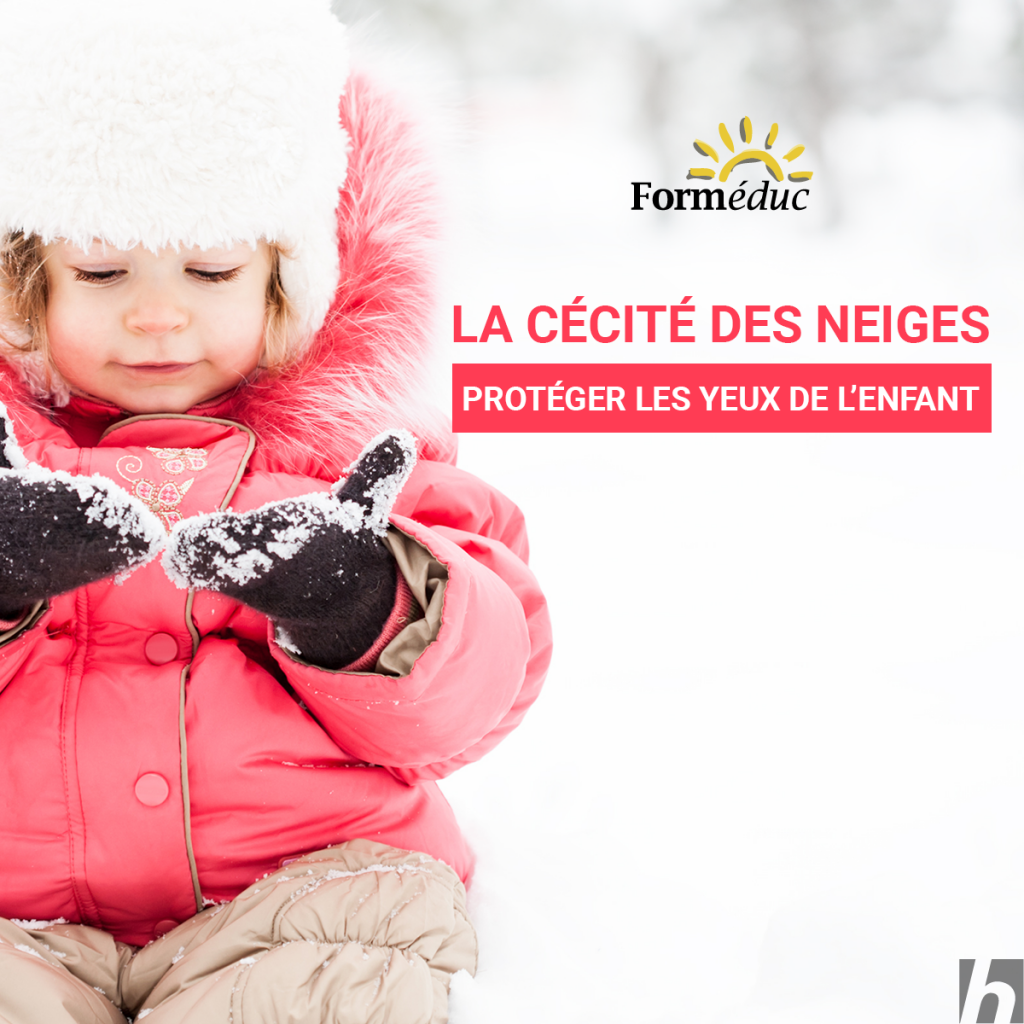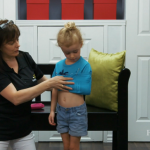

- 17 February 2020
- |
- Andrée Bouchard
Snow blindness is a superficial burn of the ocular surface, which occurs after excessive exposure to UV light or artificial sources such as welding arcs, lightning or halogen desk lamps. Also known as snow ophthalmia or photokeratitis, it can cause temporary blindness or a burning sensation in the eyes.
Snow blindness causes a burn on the surface of the eye, more specifically the cornea, the protective layer of the eye, and manifests itself in tears, pain, redness of the eye, swollen eyelids and headaches. The child’s sight is usually restored within a day.
Although we may feel that the sun is less harmful in winter, snow acts like a mirror, transmitting the sun’s rays to our eyes. By way of comparison, snow reflects 85% of ultraviolet rays, while sand reflects only 20% and water 5-10%. Given that snow is even more reflective than sand and water, it’s easy to imagine the eye damage that can result for children with unprotected eyes. Snow reflects the sun’s ultraviolet rays, so looking at snow for an extended period on a sunny day can damage the eyes and cause snow blindness.
Please note that the information given in this article is for guidance only and does not replace first aid training. For more information about our first aid courses, please visit our website at https://www.formeduc.ca/secourisme/ouor contact us at 418-626-6317.
Why are children’s eyes more fragile?
Children’s eyes, especially very young ones, have no natural protection. Children’s eyes are highly permeable to light, as the crystalline lens contains virtually no protective pigments, unlike adults’. The child’s lens is totally transparent, and the pupil is very large. Children therefore receive far more harmful solar rays (ultraviolet A and B) than adults. Looking at snow for an extended period on a sunny day can damage the eyes and cause snow blindness. That said, snow blindness can affect people of all ages.
What are the symptoms of snow blindness?
The pain following snow blindness is usually felt within 4 to 6 hours of exposure to the sun, and can increase in intensity to reach its peak during the night. In addition:
- The person feels a burning sensation in the eyes;
- The eyes are red;
- The pain is accentuated by light;
- It is accompanied by a sensation of a foreign body in the eyes, and watery eyes;
- The person may have difficulty opening their eyes or keeping them open;
- The eyelids are swollen, preventing the eyes from opening.
- Visual disturbances may occur, leading to transient blindness.
In more serious cases, or when snow blindness occurs repeatedly, irreversible damage to the lens and retina can occur: premature aging of the lens, cataracts, macular degeneration and other eye diseases.
What to do if you suspect snow blindness?
Snow blindness is not serious in itself. It usually heals within 48 hours with a little care:
- Cold water compresses on the affected eye to relieve pain and burning;
- Rest in a dark place
- Avoid wearing contact lenses for 4 to 5 days, while the cornea heals.
If pain persists beyond 24 hours, a consultation with an ophthalmologist is recommended.
How can snow blindness be prevented?
The only effective solution against ultraviolet rays and their harmful effects is to wear high-quality, well-adapted tinted sunglasses that cover the eyes completely.
- Have children wear sunglasses that block 100% of ultraviolet rays.
- Have children wear caps or hats to protect their eyes;
- Install retractable blinds, such as Venetian blinds or roller blinds, to adjust the amount of light entering the home or daycare.




